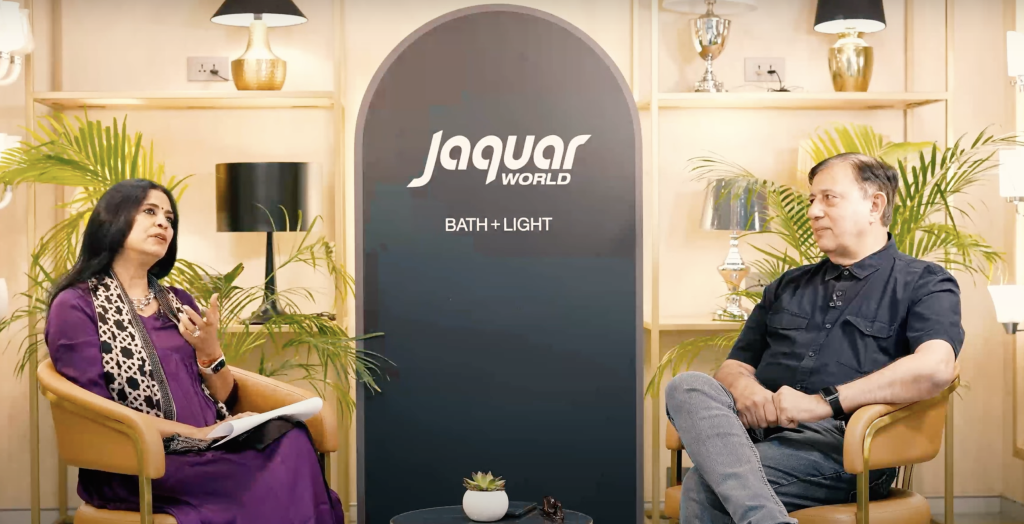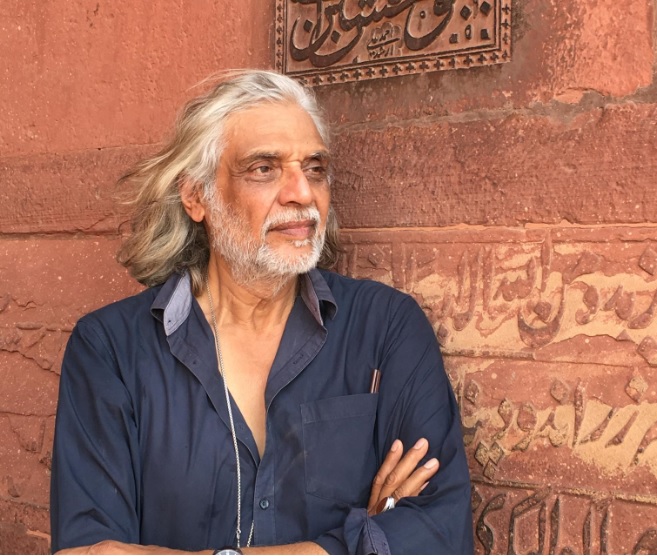Welcome to Samvaad, where art meets conversation, and inspiration knows no bounds. Here we engage in insightful conversations with eminent personalities from the art fraternity. Through Samvaad, Abir Pothi aims to create a platform for thought-provoking discussions, providing readers with an exclusive glimpse into the creative processes, inspirations, and experiences of these creative individuals. From curating groundbreaking exhibitions to pushing the boundaries of artistic expression, our interviews shed light on the diverse perspectives and contributions of these art luminaries. Samvaad is your ticket to connect with the visionaries who breathe life into the art world, offering unique insights and behind-the-scenes glimpses into their fascinating journeys.
In the lively city of Surat, nestled in the western Indian state of Gujarat, a rich history of commerce, and culture weaves its way through bustling streets and modern skylines. In this intriguing dialogue (Samvaad), Ruby Jagrut, founder of Abir India Charitable Trust and an esteemed artist, engages in conversation with Sanjay Punjabi, a prominent figure in Surat’s design and art community. Together, they embark on a journey through Surat’s multifaceted identity, exploring its historical significance, artistic endeavours, and entrepreneurial vigour. From the evolution of Surat’s textile industry to its pivotal role in global finance, Sanjay shares insights on how art, innovation, and commerce intersect in this vibrant metropolis. Through anecdotes, historical perspectives, and reflections on contemporary trends, this dialogue offers a captivating glimpse into the essence of Surat and its enduring legacy on the world stage.
Ruby: So it is like a movement which opened up to the city and, it’s opened up to the world, and they started paying attention to Surat. The names you just shared are big and very prominent in their respective fields, so they came to Surat. They took part in your Festival. I would like to know about the main objective of the Tapi Festival. You wanted to cater to visual art, you wanted to cater to literature… What was the objective? Why do you think it’s a need of an hour that you wanted to have the Tapi Festival in Surat? And also, what are the plans for you when it comes to The Tapi Festival?
SP: Actually, from 2009 to 2012, there was an era in which the internet played a different role. Generation Y and Millennials were coming together, passing through, and their demands, hunger, and appetite were being observed in different forms. Similar to the Drishtikon movement, the Bookhaliks movement also began to take place. Book review sessions were organized, where people who loved books, whether fiction or non-fiction, would regularly meet. Stand-up comedians, still in a very nascent stage, started gathering to discuss how stand-up comedy could be done. I’m not referring to Kapil Sharma, who became popular a bit later. I’m talking about how humour could find its place, and how various forms of art could coexist. Even Gandhi Smriti Bhavan and other auditoriums started hosting experimental theatre events. There was a celebration of World Theater Day in March, and related events attracted youngsters. People were looking for TED talks, so a few friends and I organized TED talks in Surat. Book reviews, motivational speakers from different genres, discussions on literature classics, and various isms were discussed at different forums, giving Surat a different outlook.
Contrary to what some believed about Surati Lalas being more focused on business, the younger generation actively participated in these activities, giving the city a different vibe.
Ruby: It is said that Surat is left with only 40 percent of Suratis and the 60 percent of the population may have come……..
SP: No I correct you that right now the population of original Suratis is less than 10 percent.
Ruby: Okay, so this was when my mom visited Surat 10 years ago. If I say that only 10 percent of the population in Surat is native (Surati), and 90 percent have migrated from different parts of India, how do you think it has changed the city’s vibe and culture? Is it for the good? What are the pros and cons? And how do you see it has benefited Surat economically, socially, and artistically?
SP:In a socioeconomic sense, if we talk about those who have migrated, they have come for two reasons. Firstly, they identified safety in Gujarat. Secondly, they found opportunities and started earning in the city. This led them to express their gratitude towards the city for providing them with earnings. They were also looking for ways to spend their money in the evenings, whether on products or art. My belief is that anyone who derives happiness from art, whether it’s watching a TV serial, attending a play, discussing literature, or admiring a painting or sculpture, finds satisfaction through art. This aspect was missing in Surat, but the appetite for it began to emerge in various fields, including literature and artistry. For example, a paint company approached us with the idea of giving away free paint to the city.
We collaborated with a Delhi-based organisation called Street, known for street art. The company provided the paint, and together we decided to express art on the city’s bridges. Surat has over 132 bridges, and if you happen to see them, you’ll notice they’ve been transformed into unique forms of art, which people have come to love.
Similarly, there was a growing demand for experimental theatre. I recall a small story where someone invited us to an experimental theatre event. When we entered, we found ourselves in a dark room, blindfolded. We became both audience members and performers, experiencing a unique experiment that was appreciated by many.
People in Surat always crave new experiences, whether it’s in food, objects, or architecture. Many new technologies and processes have been widely adopted in Surat before any other part of India.
Ruby: In the beginning of this interview, you mentioned art in your projects, and since you are also a very well-known interior designer, I want to understand how you include art in your projects. Is it a process? What is your process? Is it during the design phase or after the project is completed? Or is it an integral part of your process? I want to understand that. You also mentioned the Smart family. Smart was one of the most senior artists, and though he is no longer with us, his son Rajashri Smart is also doing very good work. Can you mention any collaborations you might have done with certain artists and talk about your projects? We largely discussed your city-level contributions, but I want to understand more about your practice as well.
SP: We wanted to conduct many experiments. Firstly, considering Surat’s reputation for saris, we explored how saris could be incorporated into interior design. We adopted saris as curtain material, which was well-received. For instance, we were designing a home for a textile-oriented individual, and we suggested using saris as sheer curtains. This idea was widely appreciated.
Another example involves a well-known couple from Surat with a beautiful history. After their marriage, they renovated their home. They had a significant memory associated with an accident that occurred shortly after their wedding. To honour this memory, we invited an artist to create a caricature of the couple during their marriage or happier times. These caricatures were displayed throughout their home, creating a personalized and meaningful environment.
When designing children’s rooms, we consider their hobbies and interests. We incorporate these hobbies into artistic elements within the room, which has been greatly appreciated.These are just a few examples of projects where we’ve incorporated art in various forms. These experiments continue, and we constantly strive to innovate and explore new ideas in our designs.
To be continued…
Surat’s Art Renaissance: A Journey from Textiles to Cultural Transformation (Part-1)





